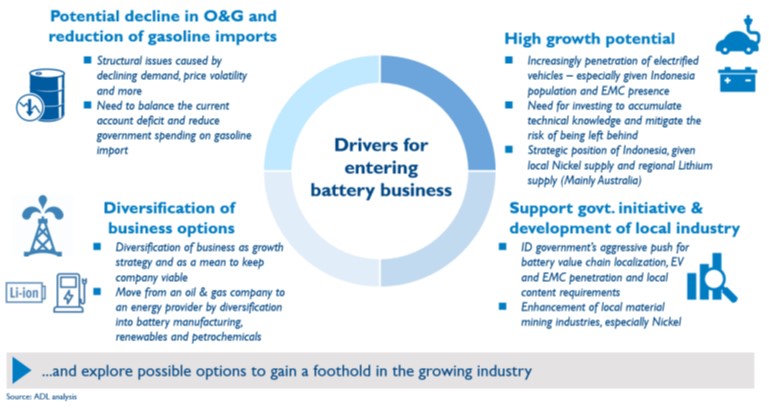Building Multidimensional Standardized Work Breakdown Structure, Cost Breakdown Structure, and Cost Estimation of The Battery Laboratory Project
FEATURED PAPER
By Tony Noorwicaksono
Jakarta, Indonesia
ABSTRACT
The Company, as an energy provider, has the intention to engage in the battery manufacturing business by setting up a battery laboratory. Building the laboratory needs a standardized Work Breakdown Structure (WBS) or cost breakdown structure (CBS) to make better estimates, project execution plan, and reliable database.
This paper aims to build multidimensional standardized WBS/CBS, cost estimation of battery laboratory, and cost breakdown for contractors. The method used to determine the selection of tables on the international WBS/CBS standard (OmniClass) uses chip voting. The cost estimation uses steps from the GAO Cost Estimating & Assessment Guide and templates from the Cost Estimating Requirements Handbook in the National Park Service (NPS).
The result shows that the OmniClass tables used in WBS/CBS are tables 11, 13, and 22. The estimate obtained to build this battery lab is $ 1,049,591, with an area of 600m2 and the cost breakdown for the contractor using class A from the NPS template. The Company is recommended to use a standardized WBS/CBS to generate more organized and reliable data used in the next project.
Key words: Cost Estimate, WBS, CBS, Laboratory, OmniClass, Chip Voting, GAO, NPS
INTRODUCTION
- Lithium-Ion Battery
“A team of global scientists started to create what would become the lithium-ion battery in the late 1970s, a form of rechargeable battery that would ultimately power anything from portable electronics to electric cars and cell phones.”[1]
For their work in creating this battery, three scientists, John B. Goodenough, M. Stanley Whittingham, and Akira Yoshino, were awarded the 2019 Nobel Prize in Chemistry. “The lightweight, rechargeable, and the efficient battery is now used in everything from cell phones to laptops and electric vehicles. It can also store significant amounts of energy from solar and wind power, making possible a fossil fuel-free society.”[2]
In Indonesia, to accelerate the implementation of an electric vehicle for road transport, the government issued Presidential Regulation No 55 in August 2019, providing incentives fiscal and non-fiscal for electric vehicle manufacturing, components industry, and end-user / customer. Since the battery is a primary component in Electric Vehicles (EV), which contributes around 40-50% of EV’s total cost, these incentives will benefit battery manufacturing to improve business economics.

Figure 1. Driver for Entering Lithium-Ion Battery Business[3]
Based on the battery business shown in Figure 1, There are four key drivers for the Company to enter it, namely:
- In the automotive application, It is a high growth potential. Additionally, Indonesia’s strategic advantages also provide an additional driver to enter the business (to be discussed further in the supply section)
- To support the government’s ambition of developing the EV and Electric Motor Cycle (EMC) industry in Indonesia, along with the entire value chain (including batteries)
- To diversify the business to be a world-class energy company
- To hedge against the risk of oil and gas decline/price fluctuation and decrease the dependence on imported oil as a fuel source.
Besides four key drivers above and supporting the Government program, the Company as an energy provider has the intention to engage in the battery manufacturing business by setting up a pilot Li-ion battery manufacturing plant. To implement that project, the Company will build a battery laboratory to enhance skill and knowledge in the business battery.
More…
To read entire paper, click here
How to cite this paper: Noorwicaksono, T. (2020). Building Multidimensional Standardized Work Breakdown Structure, Cost Breakdown Structure, and Cost Estimation of The Battery Laboratory Project; PM World Journal, Vol. X, Issue I, January. Available online at https://pmworldlibrary.net/wp-content/uploads/2021/01/pmwj101-Jan2021-Noorwicaksono-the-battery-laboratory-project.pdf
About the Author

Tony Noorwicaksono
Jakarta, Indonesia
![]()
Tony Noorwicaksono is a project engineer with ten years of professional experience in the oil and gas sectors. Currently, he works as an analyst Facilities at Research Facility & Support, Innovation & New Ventures Department, PT Pertamina. Several project have been completed, such as CNG station, pipeline, CNG converter kit and laboratory building. He holds a bachelor degree in Civil Engineering from Gadjah Mada University and a master degree in Civil Engineering from National University of Malaysia. He is attending a distance learning mentoring course, under tutorage of Dr Paul D. Giammalvo, CDT, CCE, MScPM, MRICS, GPM-m Senior Technical Advisor, PT Mitrata Citragraha, to attain Certified Cost Professional certification from AACE International. He lives in Jakarta, Indonesia and can be contacted at tn_wic@yahoo.com.
[1] Liu, Z., Says, M., Chaney, M., Says, M., Lumayag, M., Says, R., & Chhabda, R. (2019, October 11). The History of the Lithium-Ion Battery. Retrieved November 14, 2020, from https://www.thermofisher.com/blog/microscopy/the-history-of-the-lithium-ion-battery/
[2] Ibid
[3] ADL. (2019). Battery Cell Manufacturing in Indonesia Report.









